However, this digital transformation must be aligned with sustainability in the public sector, integrating with the Sustainable Development Goals (SDGs) of the 2030 Agenda. Only in this way can balanced and environmentally friendly progress be ensured.
Sustainability in the Public Sector: Current Status and Trends
Sustainability in the public sector is becoming increasingly important as institutions move forward in their digital transformation. This evolution is marked by the implementation of Digital Enabling Technologies (DETs) such as Artificial Intelligence (AI), cloud computing and blockchain. These technologies are improving both operational efficiency and the quality of services offered to citizens. The European Commission’s eGovernment Benchmark 2024 Insight Report highlights an increase in the digitization of public services in Spain, underlining the relevance of sustainability in the public sector as an essential component of this transformation.

Artificial Intelligence and Sustainability in the Public Sector
Artificial Intelligence (AI) plays a crucial role in the digital transformation of the public sector. Its ability to analyze large volumes of data and automate processes not only improves efficiency, but also contributes to sustainability in the public sector. Examples of its use include recommender systems for administrative records management and citizen assistance platforms for requesting public services. These systems optimize response times and increase accessibility. Their applications can include tasks as costly and complex as the management of road traffic flowing through cities on a daily basis. Thanks to cameras that capture images in real time or traffic sensors, it is possible to adapt the duration of traffic lights and reduce traffic jams, thus reducing CO2 emissions from vehicles. Another example in this category would be the creation of chatbots to provide answers to citizens’ most common questions, thus avoiding new trips and paper consumption. However, the intensive use of AI poses challenges for sustainability in the public sector due to its high energy consumption. According to the report “The Role of Artificial Intelligence in the European Green Deal”, the ICT sector accounts for between 5% and 9% of total global electricity consumption, and it is estimated that it could reach 20% by 2030. To address these challenges, it is critical that AI solutions are developed with a focus on sustainability. This includes adopting design principles that maximize energy efficiency and minimize environmental impact. In Spain, the Secretary of State for Digitalization and Artificial Intelligence has launched the National Green Algorithms Program (PNAV). This program promotes research and development of algorithms that are not only computationally efficient, but also optimize energy consumption and reduce the carbon footprint, thus supporting sustainability in the public sector.

Blockchain and its role in sustainability in the Public Sector
Blockchain technology also offers opportunities for sustainability in the public sector, although it faces challenges related to its energy consumption, especially with the use of consensus algorithms such as Proof of Work (PoW). However, initiatives such as the European Blockchain Services Infrastructure (EBSI) are exploring more sustainable alternatives, such as Proof of Stake (PoS), which consume less energy. This approach aligns with the European Union’s public sector sustainability goals and can significantly reduce the environmental impact of blockchain. The blockchain can find a very interesting application in traceability and security in the management of public subsidies. Its ability to transparently verify the destination and use of funds improves transparency and reduces fraud. Even having the ability to register and manage public contracts increases the efficiency of procurement. The transparency and traceability offered by blockchain are key benefits for sustainability in the public sector. In Spain, several institutions already use blockchain to ensure transparency in public procurement processes, improving efficiency and trust in the management of public resources.
The cloud as a tool for sustainability in the Public Sector
Cloud computing is another crucial tool for promoting sustainability in the public sector. Cloud adoption allows public institutions to better manage their resources, optimize energy consumption and facilitate the implementation of advanced technologies. The NubeSARA project, driven by the State Secretariat for Digitalization and Artificial Intelligence, represents a significant step towards the creation of a hybrid cloud environment that combines in-house data centers and services from external providers. This configuration allows public institutions to choose the most sustainable and efficient option according to their needs. Some agencies have already adopted cloud computing to improve data management efficiency and reduce infrastructure costs. This approach not only enables better resource utilization, but also supports sustainability in the public sector by reducing the need for physical servers and associated energy consumption.
Modernization of legacy applications and sustainability in the Public Sector
Modernization of legacy applications is one of the biggest challenges to achieving sustainability in the public sector. Many of these applications operate on obsolete infrastructures that are inefficient and energy-intensive. Migrating these applications to the cloud and refactoring them using modern architectures, such as microservices and containers, can reduce their carbon footprint and improve operational efficiency. Studies indicate that modernizing applications can reduce their environmental impact by up to 84%, which represents a significant step towards sustainability in the public sector. Some systems that tend to be migrated tend to be those related to human resources and finance management to cloud platforms. This migration not only improves efficiency and reduces operating costs, but also reduces environmental impact through the use of more sustainable and scalable infrastructures.

Sustainability in the public sector must be a central pillar in the digital transformation. The adoption of technologies such as artificial intelligence, blockchain and cloud computing offers significant opportunities to improve the efficiency and quality of public services. However, it is crucial that these technologies are implemented with a focus on sustainability. Through sound policies and sustainable design principles, the public sector can move towards a digital future that is not only efficient and accessible, but also environmentally friendly, aligning with the Sustainable Development Goals (SDGs) of the 2030 Agenda. In this way, digital transformation will not only benefit today’s society, but will also lay the foundation for responsible and sustainable technological development for future generations.
Sergio Loras, Digital Business Development in Grupo Oesía
